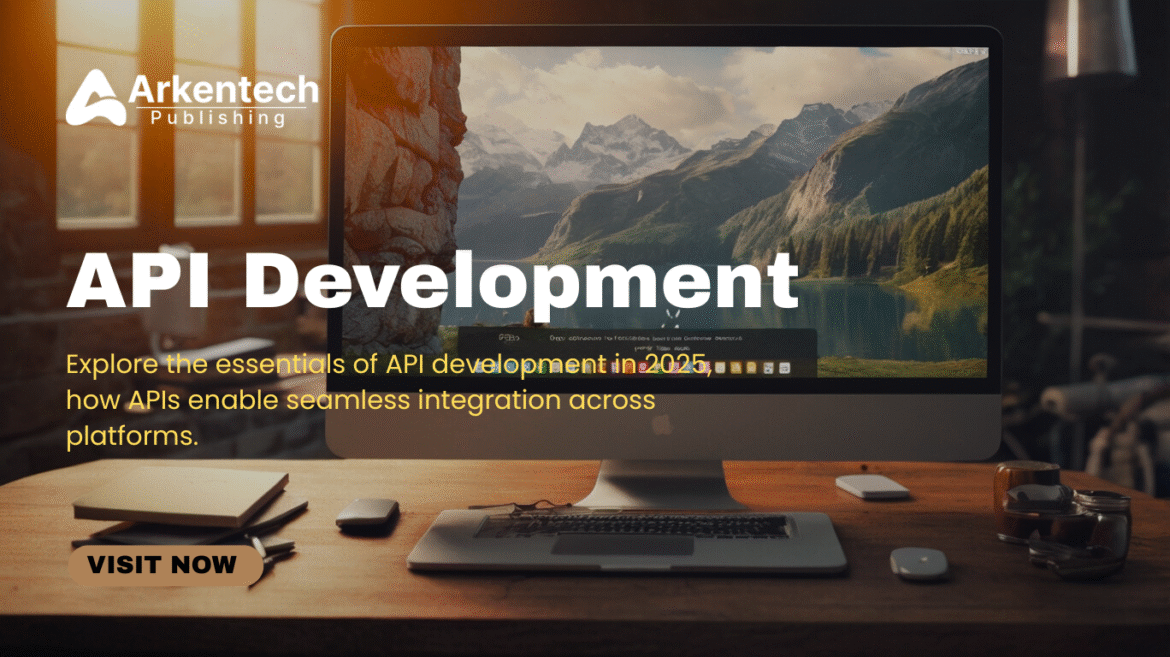Introduction
In today’s sharp-transcending digital ecosystem, API has become a basis for enabling spontaneous integration between the API Development software system. Whether you create a mobile app, cloud-based platform or IoT device, API (application programming interface), developers allow developers to unlock functionality, ensure data flow and create connected experiences.
With companies that depend on interactions with multiple platforms, strong API development is not a luxury this is a requirement. In 2025, meditation scale, safe and developer-friendly APIs change towards APIs that reduce time to market and increase interoperability.
What Is API Development?
API refers to the process of creating the development interface that allows the software system to communicate with each other. These APIs act as intermediaries, so different programs or applications can easily be asked and exchanged.
For example, when a payment port is integrated with an e-commerce platform, it uses an API to confirm the payment details. Similarly, weather records receive data using public APIs provided by meteorological organizations.
Key Components of API Development:
- Endpoint: Defined Uri -s that APIs highlight resources through.
- Request/Response Cycle: How data is sent and collected through HTTP methods (Get, Post, Put, Delete).
- Authentication: Make sure authorized users or apps can only reach API.
- Document: The developers guide the way to use API correctly.
Benefits of Effective API Development
Investing in quality API development leads to scalable, secure, and cost-efficient solutions. Here are the key advantages:
- Rapid growth cycle: APIs provide ready-made functionality that can benefit from developers, product growth and speed up the market from time to time.
- Platformagnatism: APIs allow communication on platforms-it is iOS, Android, webapper or third-party software.
- Better integration: From CRM system to cloud storage, APIs enables spontaneous integration with other services, which increases the functionality of your product.
- Promoted security: Modern API development includes OAuth 2.0, JWTS (JSON Web tokens) and Rate-Limit to ensure secure data transfer.
Best Practices for API Development
As the demand for API increases, long -term success and praise are ensured by following the industry’s best practice.
- Provide complete documentation: Your API is just useful as documentation. Use tools that swag UI or Reidok to generate developer -friendly guides.
- Design first, later code: Use Openapi (East Swagger) or Postman to make a clear design plan before jumping into the code. This helps to coordinate developers and stakeholders.
- Use residual standards or graphul: Restful APIs provide a predicted structure, while Graphql provides customers only the flexibility to ask the data they need.
- Implementation version: Always include version checks in your API endings (eg /pi/v1/resources) to avoid fractures for existing users.
- Priority To handle Priority: Use Standard HTTP status Code and return Useful error messages for better troubleshooting and user experience.
Top Tools for API Development in 2025
Here, leading equipment developers are used to create and manage API -are effectively:
- Postman: Ideal for API testing and collaboration.
- Swagger/Openapi: To design, document and test residual API.
- Rapidpi: A market to find, connect and manage API.
- King / Apigee / AWS API Gateway: API for steering, monitoring and scaling.
Use Cases of API Development Across Industries
APIs are important in a wide range of applications:
- Finance: Payment -API, fraud detection and use of transaction history.
- Health services: Sharing patient data through HL7 FHIR API.
- Retail: Warehouse management, cash system and recommended engine.
- Travel: Real -Time Booking, Pricing and Flight Conditions API.
Future Trends in API Development
The API development will continue to develop in 2025, focusing on this:
- AI interest API: APIs offer predictable analysis, chatbots and personalities.
- Low-COD API integration: so non-developers can add services using Drag-end-DROP platforms.
- Event-driven API: Removing comfortably for real-time data delivery using websites and server-watch events (SSE).
- API observation: Monitoring of the performance measurements, the miscalculation and the delay in real time.
Final Thoughts
API development is an important column for modern digital innovation. Whether you create a mother -i -law platform, a fintech app or a connected smart device, API unlocks the correct capacity for your technology. By focusing on strong architecture, standardization and developer experience, you can ensure that your APIs remain relevant and powerful.
For more tech insights, trends, and digital strategies, visit ArkentechPublishing.com and stay ahead of the curve.

